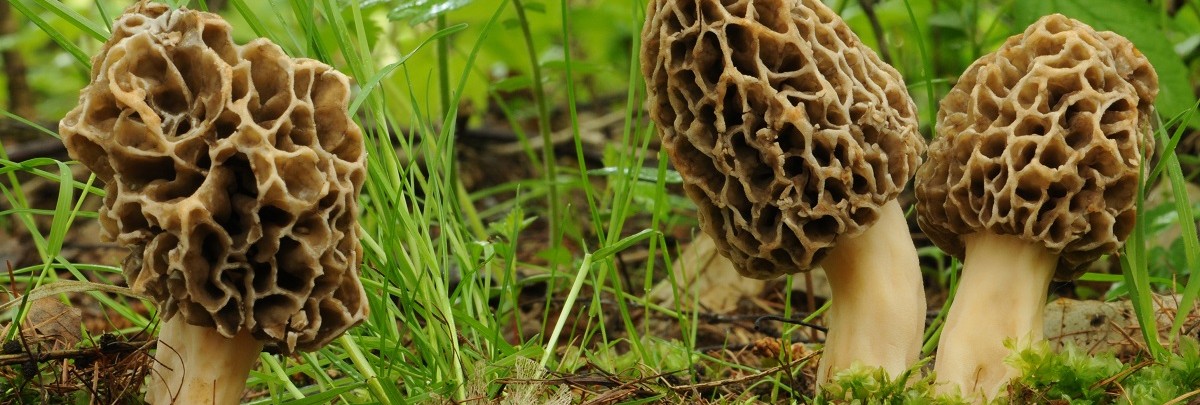Warming air, singing songbirds, and budding trees mean one thing…okay, maybe two – morel mushrooms and gobbling turkeys! It’s one of nature’s finest wild food offerings on the planet. Being able to hunt a wild turkey that is so wonderfully complimented on the dinner plate by one of the very plants (or should I say fungi) it walks and struts amongst is truly a culinary gift. Few things match the taste of a wild turkey breast smothered with freshly sautéed morel mushrooms! What a beautiful combo, however, both can be tricky to get from the woods to the table. Below are a few field and kitchen tips for those of you that celebrate the hunt the way it supposed to be celebrated. . . On your plate, and with your family!
Where and When to Look for Morels
Just like turkey seasons, morel mushroom seasons vary by region. Spring is the easy answer, and for much of the country, that falls between the middle of March and the end of May. Every year is different, but the general rule of thumb is to expect morel filled woodlots when the nights no longer dip below 40°F. That’s good news for you turkey hunters out there because that’s when you will likely be chasing longbeards around the countryside, so keep your eyes peeled!
Morel Mushrooms: Range and Dates

Morel mushrooms thrive in disturbed areas such as: recent burn sites, flood plains, hillside washes, and logging locations. Any serious mushroom hunter will tell you that they can show up anywhere, but there are a few habitat hotspots that really standout. Since morels are a mycorrhiza (live off another plant’s roots), they are often found in association with certain types of trees. If you know where the certain types of trees are, then you can concentrate your search efforts in high quality areas. Some of morels’ favorite trees include Ash and Elm (especially dead Elm). While those are favorites, other capable morel producing trees include: Sycamore, Tulip Poplar, and Cottonwood.
You Found Them, Now What?
With the above site tips, there’s no doubt that you will likely find some morel mushrooms. What you do with them after you find them is critical to their taste. There is much debate about whether or not you should soak them in salt water to free them of any bugs and dirt. While many believe in the 24 hour soaking method, it is not necessary and quite frankly, makes them mushy and kills the flavor. Many, including myself, believe they taste the best if you clean them under cold water and use a basting brush or soft bristled tooth brush to clean the numerous cavities. Clean the pores as best you can with the brush, then slice in half the long ways, rinse again, pat them dry, and then toss them into the frying pan! If you are still worried about a few bugs, soak them in COLD water for 15 minutes immediately before cooking. Only clean as many as you plan to eat, and keep the others stored in a paper bag in the refrigerator.
For further information on morel mushroom identification click here.

If you go out searching for morels, it is best to carry a paper bag or mesh sack to store them in while you are out looking. Or if you’re like me, I usually end up having to stuff my baseball cap full of them while out turkey hunting…nothing wrong with that though!
Into the Frying Pan
Keep it simple – some butter, garlic, flour and your choice of spice or marinade is all you need to create a mouth-watering dish of Wild Morel Mushrooms. Simply follow the recipes below.
Ingredients
– 1 lb. Morel Mushrooms
– Flour
– 1/2 cup butter or margarine
– 1-2 minced garlic cloves
– Spice or Marinade of your choice
Directions
2) Melt the butter in a large pan over medium heat with the minced garlic cloves.
3) Lightly flour the mushrooms after pat drying them.
4) Cook in butter 3-4 minutes or until golden brown, stirring constantly.
5) Brush with a light coating of the marinade of your choice.







